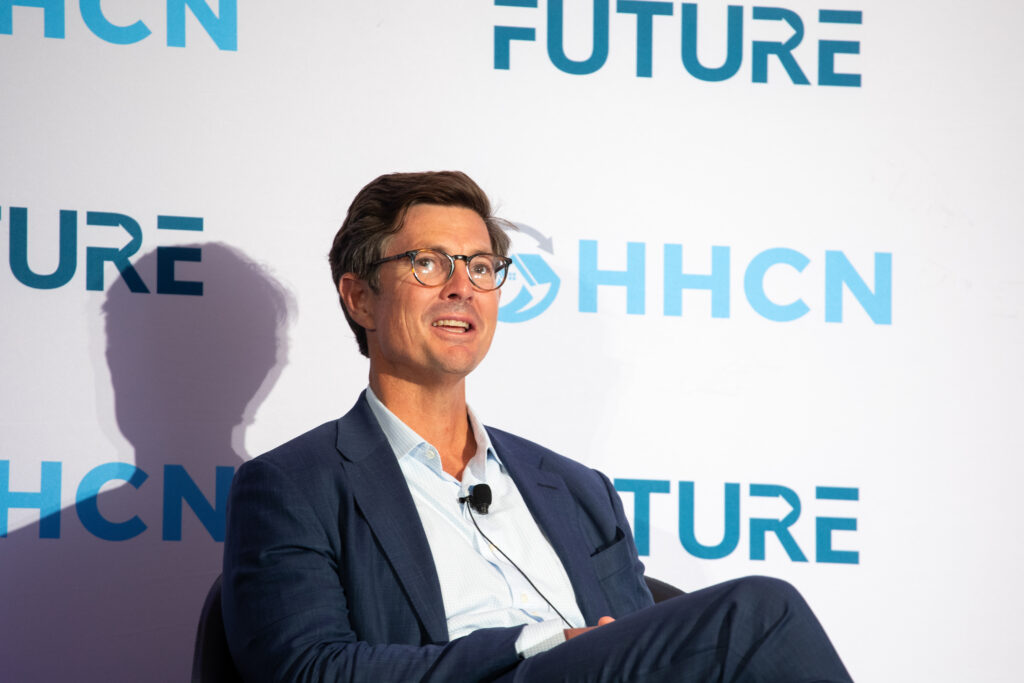The Vistria Group, a Chicago-based private equity firm, believes in home-based care’s value.
Its investments back that up. Over the years, the company has built a diverse portfolio of home-based care assets that include home health and home care providers, vendors and a management services company.
Specifically, those assets include Help at Home, Mission Healthcare, Medalogix, Tango, St. Croix Hospice and VitalCaring, among others.
Home Health Care News recently caught up with David Schuppan, senior partner and co-head of health care at The Vistria Group, to talk about his company’s strategy, market headwinds and tailwinds, and the new home-based care “superpowers.”
The below conversation is edited for length, clarity and style.
HHCN: In your position, are you noticing any trends in the home health investment space?
Schuppan: From a high level, I don’t think any of them are novel.
Reimbursement, labor, cost of capital, regulation are all very different — not always in a good way — relative to what they have been for the past decade. All of those are making it more challenging to build your business and, naturally, they are having a chilling effect on new investment and M&A until providers better understand and adapt to this new normal.
In your view, what are some of the key tailwinds that factor into the current home health investment space?
There are the trends demographically. Volume is immensely favorable for the populations that we treat. The site of service — the home — still remains the most favorable.
Despite the difficulties, those are long-term secular winners, at least from an investment perspective. The dislocation that is caused by those four macro trends that I mentioned is also creating more opportunity now, but the risk and the thoughtfulness before pursuing them have both gone up immeasurably.
I think that’s why you’re starting to see deal flow fall off.
On the flip side, what are some of the other key headwinds that factor into the current home health investment space?
One that I haven’t mentioned is that you now have two emerging superpowers in home health — UnitedHealth Group (NYSE: UNH) and Humana Inc. (NYSE: HUM).
The rest of the home health industry will need to better define and differentiate themselves with respect to market positioning, growth priorities, culture and outcomes, given the inherent scale, scope and capital advantages those larger entities possess.
That said, our experience would say that there’s always a strong opportunity for middle-market providers to thrive in this type of environment. Given the industry challenges over the past year, the interesting question for all of us is — who will those middle-market providers be?
What kind of investment windows does Vistria have with its home health assets? The typical 3-5 years, or are these longer-term plays?
We tend to focus less on the timeframe and more about the company’s specific goals, whether those be economic or impact related, and the achievement of those goals, when the environment is, let’s say, more conducive to achieving them.
I think you’ve seen a lot of folks build and have liquidity in three years. My sense is that’s going to extend pretty materially, given the environment is more complex. We don’t try to handicap or put a timeframe on it.
We’ve seen your company invest on the home health on the provider side, and then with Medalogix on the clinical intelligence, data and software side of the industry. What other pieces of the puzzle do you guys have your eye on?
We’re big fans of taking a 360-view of supporting this site of service. We fundamentally believe that this is where people prefer to be and where value is created.
In addition to care provision, and skilled post-acute, as well as hospice and long-term support, we’ve also invested pretty significantly in what I’ll call the support services, or enabling services.
We’ve invested in risk enablement, through Tango, which is focused on helping improve access and value of in-home care, which is obviously a very important topic for those that pay for care, but also those who provide it and receive it.
We think that pharmacy is an underappreciated component of this. Most of the individuals we care for are polychronic. Retail and mail is not a great way to help them optimize their pharmacy use. We have a business called HomeFree Pharmacy that works with providers to provide integrated long-term care pharmacy at home.
We don’t brag about it enough, but Vistria Group, through our knowledge and learning services group, is one of the largest job creators of in-home talent, whether it be nurses, therapy, etc. Every one of our companies has a labor opportunity. We’re very fortunate to have specialists that help us either with training, or with actual creation of labor. Our education team is our secret sauce.
That 360-view allows us to, hopefully, be more intelligent about where we spend time, but more importantly, help the people that we are partnered with more effectively.
Vistria has a ton of interesting portfolio companies beyond home health, too. Behavioral health is well represented, for instance, with portfolio companies like Sevita, Beacon and Behavioral Health Group. Does having an in at those organizations benefit your work in home health at all?
Not every company can do everything, so having partners that are willing to help you pilot, or do things that are not always natural, we found is immensely valuable.
The building blocks to value are not just medical and non-medical in-home care, but they’re also behavioral, they’re social, they’re pharma-related. Having partners, or best-in-class platforms, helps us collaborate towards a common solution where we can also leverage or capitalize on our relationships with those risk-bearing entities, whether those be health plans, ACOs or enablers.
Home health is an enduring business. It goes through cycles. We’re going to be here for a long time.




